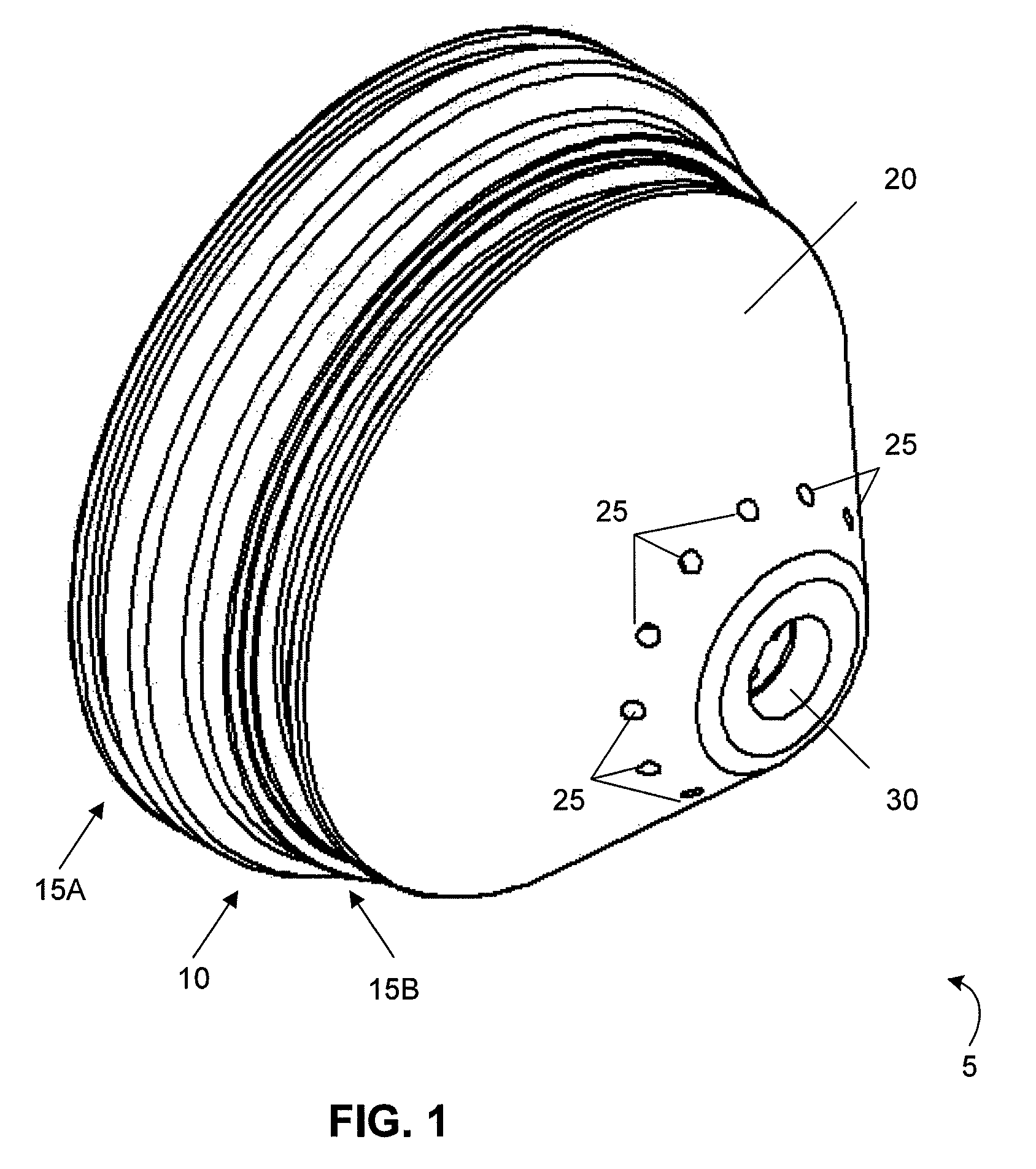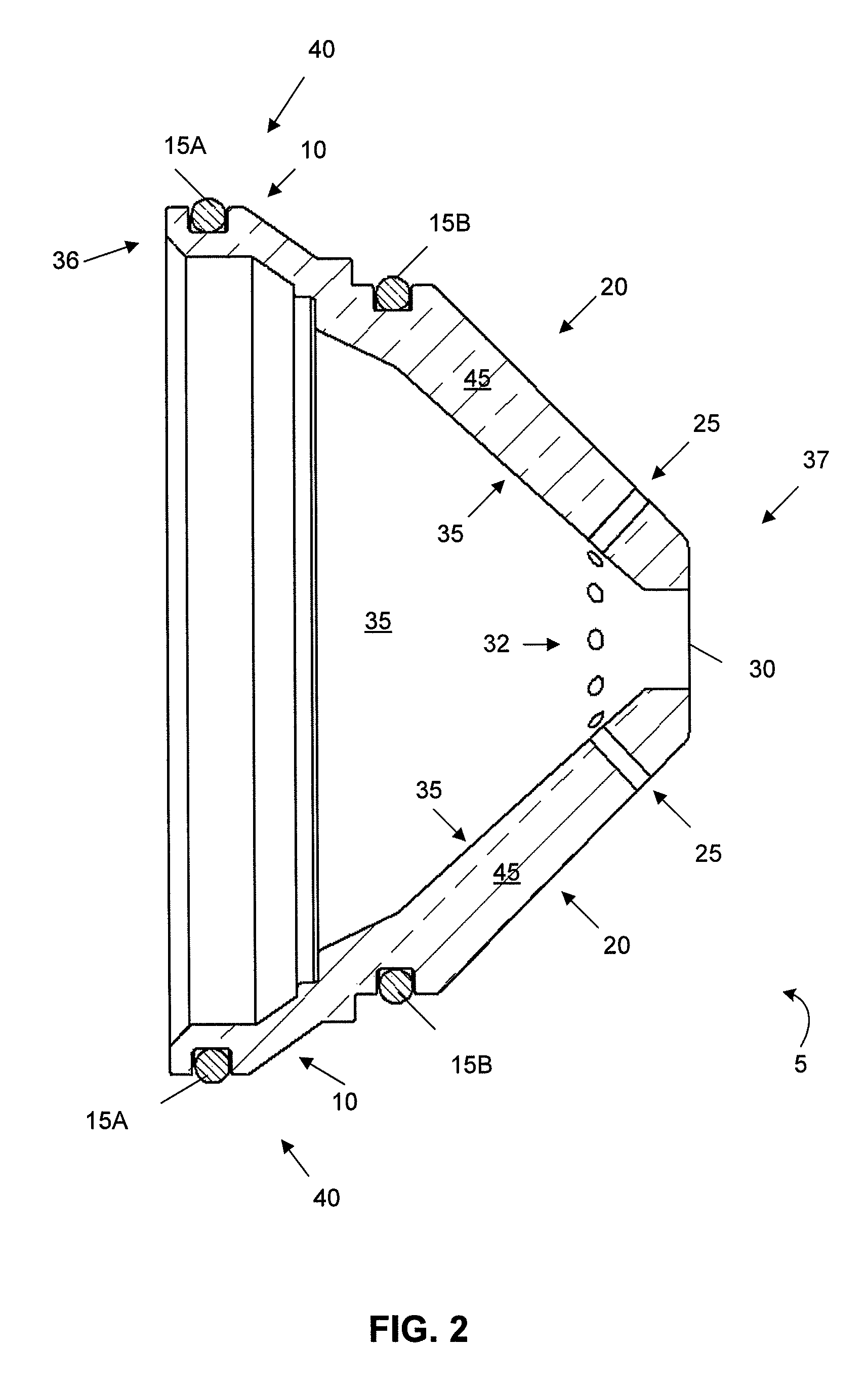Liquid cooled shield for improved piercing performance
a shield and liquid cooling technology, applied in the field of shields, can solve the problems of affecting melting the shield, etc., and achieve the effects of extending the useful life of the shield, enhancing the cut quality of the plasma arc torch, and affecting both the cut quality and the life of the shield
- Summary
- Abstract
- Description
- Claims
- Application Information
AI Technical Summary
Benefits of technology
Problems solved by technology
Method used
Image
Examples
Embodiment Construction
[0033]FIG. 1 is a drawing of a shield 5 according to an illustrative embodiment. The shield 5 can be disposed relative to a plasma arc torch that pierces and cuts a metallic workpiece producing a splattering of molten metal directed at the torch. The shield 5 can protect consumable components of the plasma arc torch from the splattering molten metal. The shield includes a body. In this embodiment, the body of the shield includes a first surface that is configured to be contact-cooled by a gas flow (not shown). Contact-cooling can include cooling a portion of the shield (e.g., surface) by contacting it with a coolant (e.g., cooling medium, cooling liquid, cooling gas, etc.). In some embodiments, the surface cooled by the gas flow is an internal surface (e.g., hole, exit port) disposed relative to the shield. The body of the shield also includes a second surface 10 configured to be contact-cooled by a liquid flow. In some embodiments, the body of the shield includes two pieces. In som...
PUM
| Property | Measurement | Unit |
|---|---|---|
| temperature | aaaaa | aaaaa |
| temperature | aaaaa | aaaaa |
| temperature | aaaaa | aaaaa |
Abstract
Description
Claims
Application Information
 Login to View More
Login to View More - R&D
- Intellectual Property
- Life Sciences
- Materials
- Tech Scout
- Unparalleled Data Quality
- Higher Quality Content
- 60% Fewer Hallucinations
Browse by: Latest US Patents, China's latest patents, Technical Efficacy Thesaurus, Application Domain, Technology Topic, Popular Technical Reports.
© 2025 PatSnap. All rights reserved.Legal|Privacy policy|Modern Slavery Act Transparency Statement|Sitemap|About US| Contact US: help@patsnap.com



